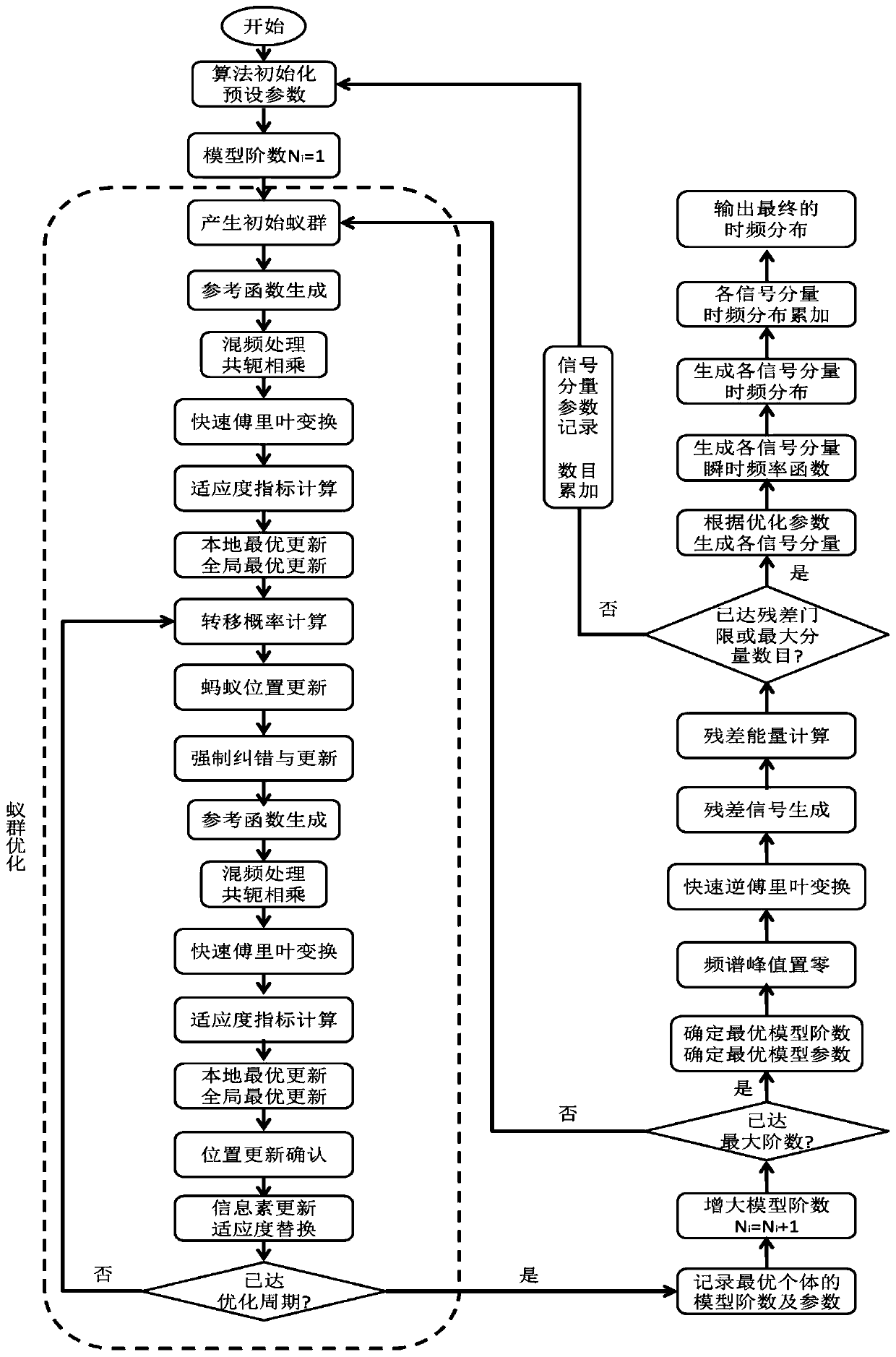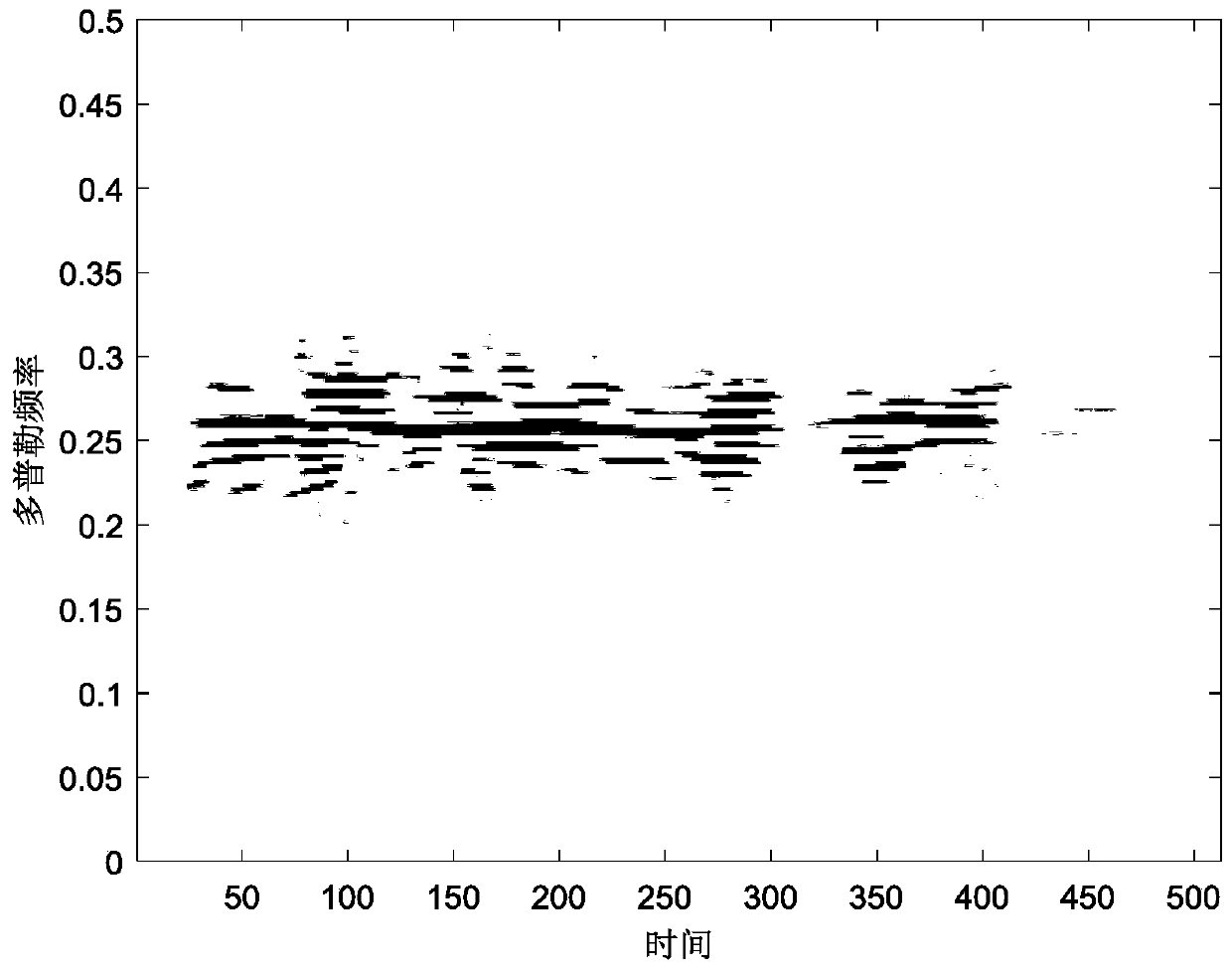An Adaptive Time-Frequency Transformation Method of Polynomial Phase Signal Based on Ant Colony Optimization
A phase signal, time-frequency transformation technology, applied in the field of signal processing, can solve problems such as practical operation and operation process of modern optimization algorithms that are not specified in detail
- Summary
- Abstract
- Description
- Claims
- Application Information
AI Technical Summary
Problems solved by technology
Method used
Image
Examples
Embodiment Construction
[0080] The present invention will be described in detail below with reference to the accompanying drawings and examples.
[0081] The present invention first estimates the model order of each component of the polynomial phase signal and the corresponding phase parameters of each order through an ant colony optimization with a certain period and a certain scale, and then uses the idea of "cleaning" to extract the corresponding polynomial phase signal components , and remove this signal component from the original signal to obtain the residual signal, and then use ant colony optimization repeatedly to determine the order of the adaptive model and optimize the optimal model parameters for the residual signal in an iterative "cleaning" manner, and gradually extract the The steps are repeated for each signal component until the energy of the residual signal is lower than a preset threshold or the number of extracted signal components reaches a preset maximum value. Then, the phas...
PUM
 Login to View More
Login to View More Abstract
Description
Claims
Application Information
 Login to View More
Login to View More - R&D
- Intellectual Property
- Life Sciences
- Materials
- Tech Scout
- Unparalleled Data Quality
- Higher Quality Content
- 60% Fewer Hallucinations
Browse by: Latest US Patents, China's latest patents, Technical Efficacy Thesaurus, Application Domain, Technology Topic, Popular Technical Reports.
© 2025 PatSnap. All rights reserved.Legal|Privacy policy|Modern Slavery Act Transparency Statement|Sitemap|About US| Contact US: help@patsnap.com



